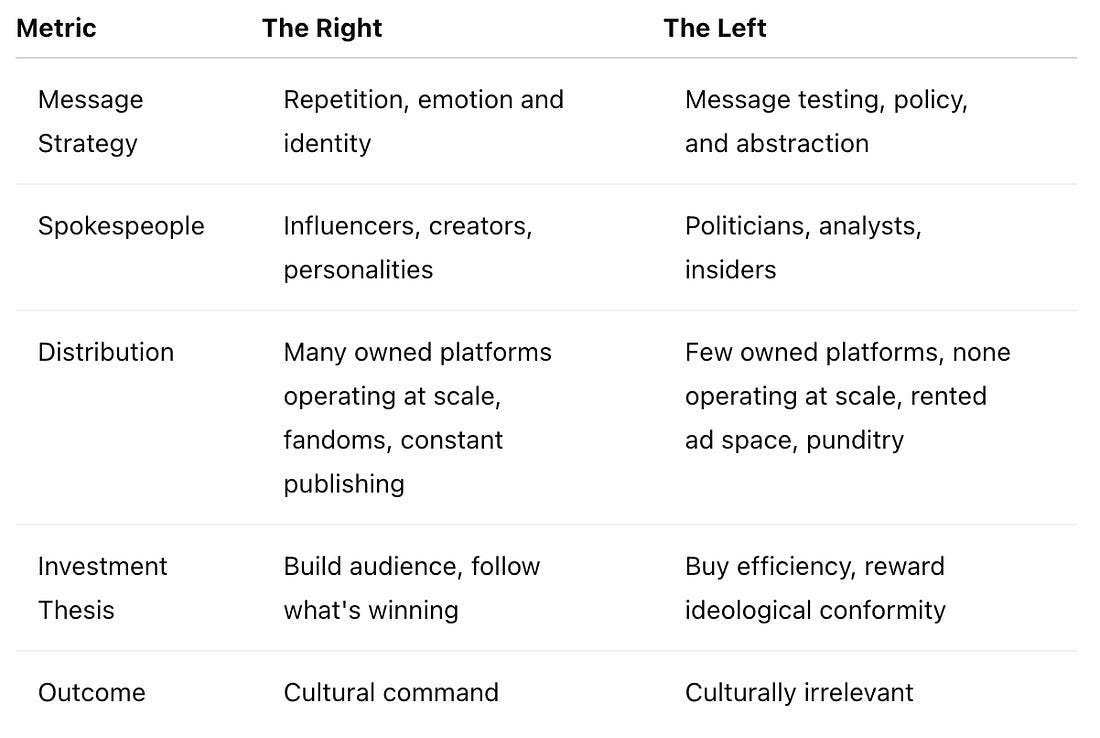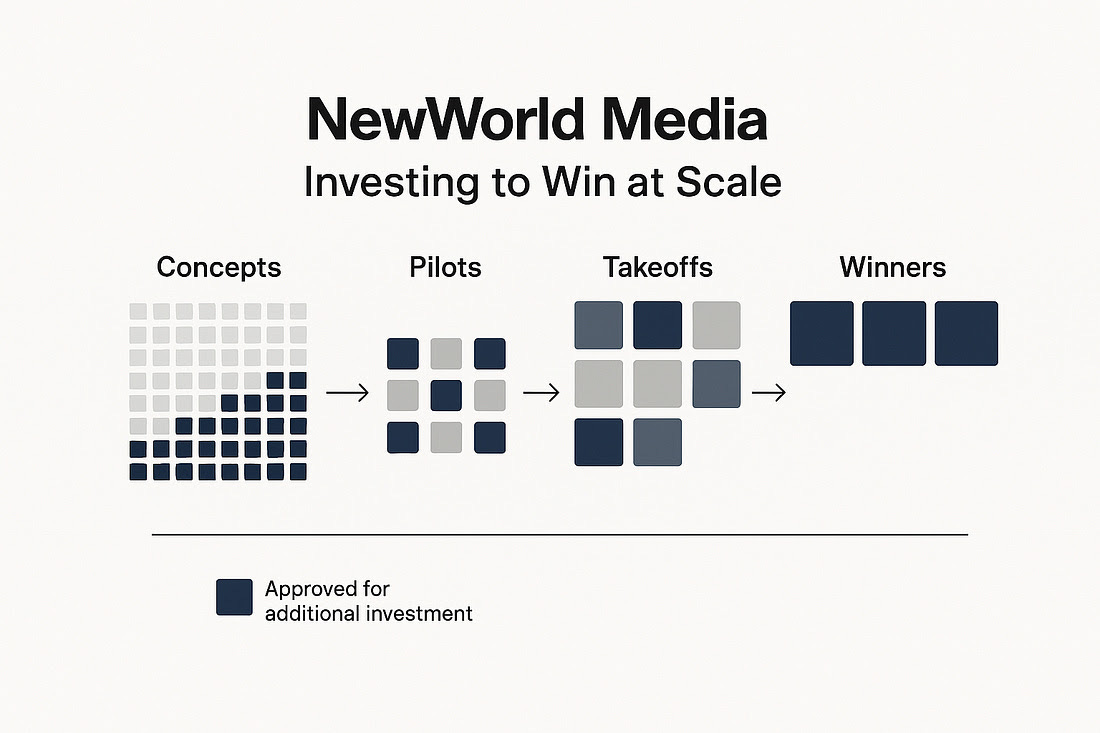
Just a few weeks ago, ICE launched sweeping immigration raids in Los Angeles. Protesters blocked freeways, police fired tear gas, and tensions exploded across the city and between politicians in California and Washington.
Mainstream news outlets spent weeks covering the escalating confrontation. The Los Angeles Times described “demonstrations and skirmishes.” NPR contextualized the protests as a response to a “tinderbox” of political pressure. CBS tracked the escalation from ICE raids to National Guard deployment. But those grounded, and relatively balanced, narratives stayed buried behind paywalls or pushed down in the algorithm.
In another era, earning this kind of media coverage was the strategy for triggering mass outrage, dating back to the civil rights movement when leaders pioneered these tactics at the dawn of the television era. But today, most Americans are not tuning in at 6pm to watch one of three networks shape their shared sense of reality. This growing asymmetry - between mainstream news, which only a shrinking fraction of Americans point a tiny slice of their attention to, and the algorithmically moderated, entertainment-rich feeds where the average person spends 6 hours per day (the equivalent of a full time job) - means that many audiences consumed entirely different versions of the events in LA.
On the feeds, coverage was not balanced. A chaos narrative spread unfiltered across TikTok, YouTube, and Instagram. Viral footage circulated without context. Right-wing creators pounced: framing the protests as “lawlessness,” warning that “Democrats can’t keep you safe.” Within hours, the White House made their strategy plain:
“We couldn’t script this any better,” a source close to the White House told Politico. “Democrats are again on the 20 side of an 80-20 issue... It’s the same thing that won [Trump] the election.”
This wasn’t just backlash. It was a narrative trap—built to dominate feeds, to drive polarization, and to manufacture consent for aggressive enforcement of a mass deportation policy that is, for now, unpopular among most Americans.
We should have been ready for this moment. But our vast creative and persuasive powers were largely neutralized in the feeds and fandoms where most people make meaning. Over and over, our lack of imagination leads to too few ideas; that lack of inspiration fuels weak commitment to our stories and wholly inadequate investment; and with no scale to compete, we try to buy a path forward with advertising, letting our values die under a billion ignored impressions. We keep bringing the same slingshot to a media war that’s gone nuclear and still think we have it under control.
And this is our kryptonite — mistaking control for strategy. While we rely on message testing, political surrogates, and rented ad space, the right builds power through repetition, creators, and owned distribution.
The right commands culture by acting boldly at scale; we’re ignored in culture by proceeding with caution. That is how you lose a culture war.
Our addiction to this kryptonite is fueled by the belief that we can’t win in today’s media environment. Instead of investing at the scale required to compete, we keep choosing restraint and calling it strategy. Somewhere between COVID lockdowns and Bidenomics cocktail parties, we convinced ourselves that less is more, that caution equals responsibility. But in a fragmented, high-speed information war, caution is often the bigger risk.
Ironically, 2020 should have been our proof point. Progressive creators and cultural strategists fueled the largest multi-racial mobilization in American history—helping launch a president from a bunker to the White House. That energy was built over a decade of movement infrastructure, Black-led innovation, and social media experimentation. We should have doubled down.
Instead, we backed off. We let the backlash spook us. We pulled funding from the organizations and creators who brought us to the edge of transformation. We abandoned fandoms, defunded experiments, and in 2024 returned to the familiar: over a billion dollars poured into ads no one remembers, and field programs that quietly collapsed.
The right did the opposite. Even after the disgrace of January 6th, they stayed on message—and unleashed the messengers. They let bold, weird, magnetic personalities carry the narrative. They bet on creators. They built distribution. They scaled stories into belief systems.
This is what it looks like to confuse cultural command with control:
Last year, the Harris campaign spent over $600 million on advertising. Affiliated outside groups spent another $740 million on ads. That’s $1.34 billion—on ads. Imagine if just 25% of that—$335 million—went to sustained investment in media infrastructure. We could build the pipelines that matter: discover the next generation of storytellers, seed new fandoms, launch prototypes, and scale the ones that work. Before the election. Not after. This is the level of investment that is required if we are serious about defending democratic institutions, rule of law, pluralism, racial and gender justice, or human rights.
We need innovation, not nostalgia. Cultural intelligence, not institutional inertia. And most importantly—scale.
What we’re building next is one answer. Earlier this month we launched NewWorld Media, a startup accelerator for narrative power — fast, adaptive, and modeled on venture studios that deliver winners at scale. Fueled by blended capital willing to take the risks required to win (including a 501c3 Model C Fund), we rapidly develop, test, and scale new media properties that earn trust and drive influence. If a project gains traction, we invest more and transform it into a “shovel-ready” media asset—ready for additional investment, licensing, distribution and monetization through traditional broadcast networks (radio, TV, cable) and user-generated content channels alike.
We’re already starting to think big with:
One of the nation’s leading worker organizations tapping the massive influencer reach across their grassroots base.
A cross-sector feminist collaborative intervening in reality TV’s dating discourse.
A Black-owned media studio launching new formats and creators.
A network of radio stations developing talent and shows for younger audiences.
It’s bold and ambitious and every attempt won’t succed - but this is what it looks like to drop the kryptonite. And we know we can’t do it alone. That’s why we’ve worked with the Democracy Alliance to stand up their new Media Fund for the American Majority, housed at Amalgamated Charitable Foundation. The fund has ten projects ready to move now—including NewWorld Media—and more to come. Each one has the potential to scale. None currently have the resources to do it.
If you have a grant, a platform, a budget, or a network—move it. Not in Q4. Not after the next election.
If you can’t fund directly, share this with five people who can. You know who they are. Make the ask.
For now, we still have an opportunity to drop the kryptonite and take back our superpower: the ability to master media and bend the moral arc in the direction of a culture worth living in.
Will we meet the moment?
—Andre







You may appreciate what we are doing @AndWeFeelFinePod on YouTube.